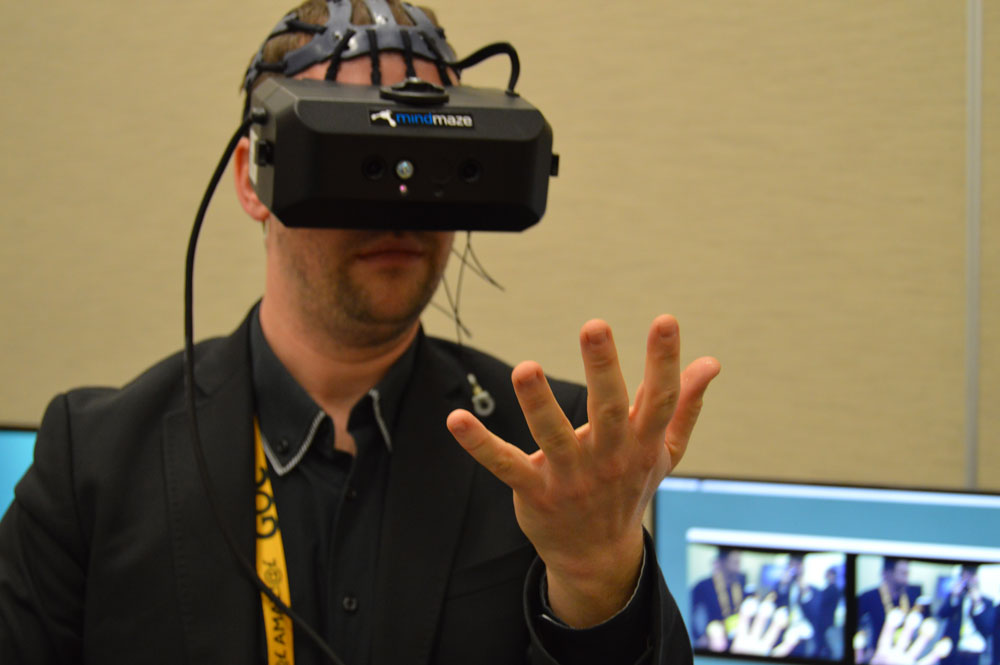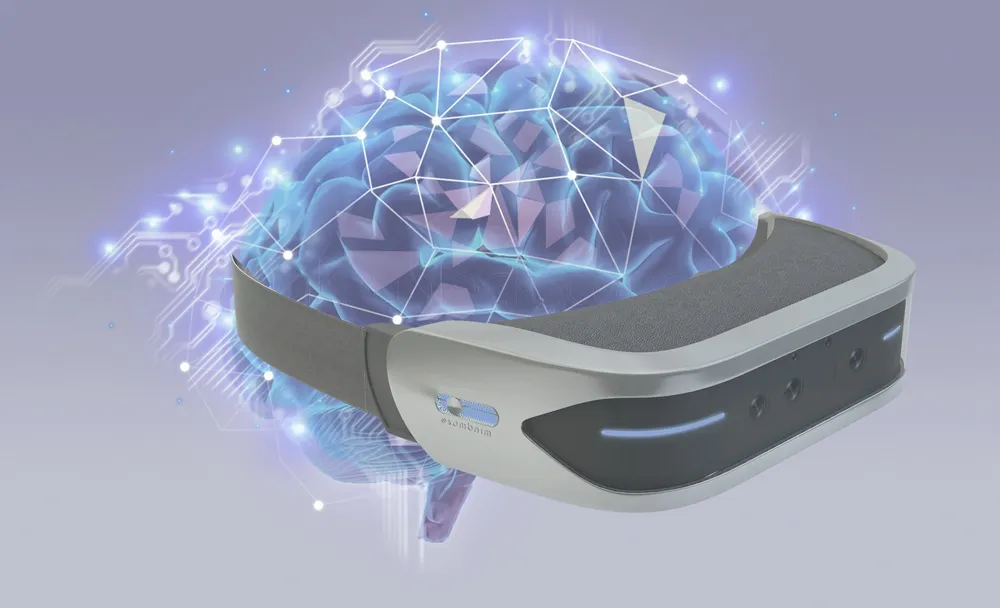What if you could control a game with your thoughts or, even cooler, what if a game could control your thoughts?
It is something that seems like science fiction today but as we enter what famed physicist Michio Kaku is calling “the golden age of neurotechnology” these things are inching closer to becoming a reality. Among all the research in the field there are real players beginning to take shape, the latest of which being the Switzerland-based company MindMaze who just received a large investment from a Hinduja Group entity valuing the company at over $1bn USD, a massive increase in valuation since it received $10M in 2012. According to the report by the Economic Times, the investment was for “less than a third” of the company and makes MindMaze one of two “Unicorns” in the AR and VR space, joining Magic Leap (recently valued at over $4bn).
Led by Dr. Tej Tadi, a doctor with over 10 years of specialization in the neuroscience field, MindMaze is a 52 employee strong neurotechnology company focused on combining virtual reality and motion capture with brain machine interfacing to help patients recover from traumatic events.
MindMaze’s virtual reality system uses a combination of methodologies to produce interactions in VR with “zero latency” according to Dr. Tadi. The system works by combining (in a modular way) a a band with dry electrodes to sense your brainwaves and muscle activity and a proprietary motion capture camera system to “predict” your movement before you make it. As Dr. Tadi explained in a previous interview with UploadVR “if I have movement data, muscle data, brain data, I can weigh for information, so I know that you’re going to move your hand, I can predict it from this, but I can also predict it from your muscle activity, and I can confirm it with my motion capture camera that you are moving the hand.”

The reason for this system has a lot to do with the problems that Dr. Tadi is trying to solve. When we went hands on with the system at GDC last year we were shown a video of one of the systems in action in a hospital setting. In the video we saw a woman who was paralyzed on her left side going through the “gamified” recovery process that MindMaze has developed.
“What happens is the brain is contralaterally mapped, so the right part of the brain controls the left, and the left hemisphere does the right,” Dr. Tadi told UploadVR as the scene shifted from the woman moving her right arm on the screen to moving the left. “Now she has a right stroke, she can move the left, but when she’s moving the right hand, and she’s seeing something there, the brain area that’s responsible is saying, hey, hang on, I can still control that hand, let me start kicking some aiders in. And so slowly the recovery comes in. So it’s a game to play—which is fun and entertaining, because [her recovery] isn’t going to happen if she just does it once. She’s got to do it repeatedly to reinforce it, and there the gameification pieces kicked in.”
The gameification of the process also got Dr. Tadi and his company thinking about broader consumer use cases for the technology, such as gaming, a thought process that led to the creation of the internal subsidiary MindMaze. With MindMaze, the team is looking to both integrate their technology stack into future generations of VR headsets like the Oculus Rift as well as create their own standalone HMD that is “almost competitive with what is out there.”
While it is unlikely that we will see this technology making it into consumer products in the very near future, brain machine interfacing is a huge part of VR’s distant future. One of the key problems with VR replicating both perfect input and perfect haptic feeling. For example, while the HTC Vive controllers feel natural as virtual handguns they wouldn’t work nearly as well as, say, a representation of a virtual baseball you were about to pitch. They simply wouldn’t feel natural in your hands in that scenario.
But what if you could send a signal to your brain that mimics the exact neurotransmissions that happen when you pick up a baseball? According to Dr. Tadi, that is coming – and a hell of a lot faster than you might think.
“The long term vision for us is to enable people to completely experience VR as they should,” he says, “let’s say I move, and I had caught something, and I told you, this is how your brain reacts. Now, do you want to feed that signal back into the brain to make yourself move better? Like, you get my point? That kind of feedback loop closed? We do that, but we do that for patients, because they need to get better. So how can you enhance—I think, enhance different aspects that can come, and how long? I think five years, six years, to a level where it’s useable, in a level where it’s consumable technology and not sophisticated medical intensive care.”
If MindMaze can take us there, they are worth every penny of their newly anointed Unicorn status.
Disclosure: MindMaze recently signed on to be one of the inaugural members of the Upload Collective. Neither UploadVR nor its editors have a stake in the company at this time.


























